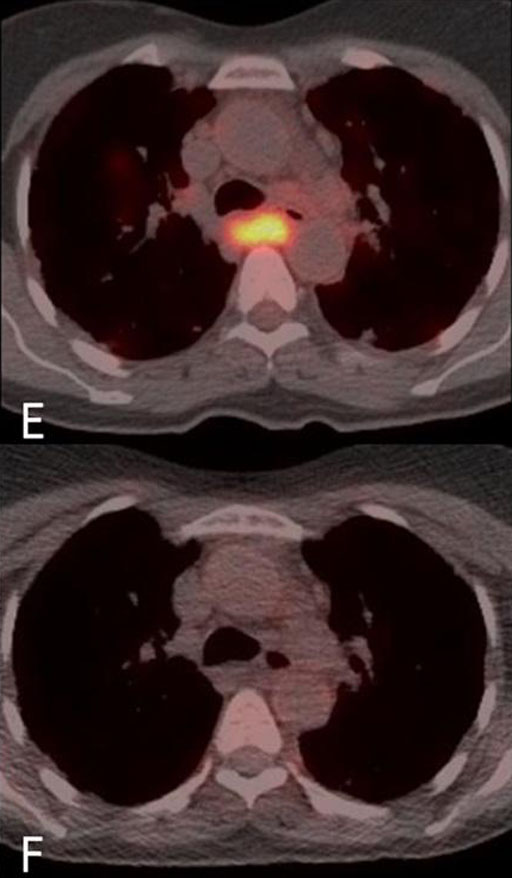Patients with CVID Could Benefit from New Imaging Technique
By Andrew Deutsch
Posted on 08 Dec 2016
An imaging technique using the tracer FDG (fluorodeoxyglucose) together with PET-CT imaging could be used to help patients with inflammatory complications of immunodeficiency disease.Posted on 08 Dec 2016
The new proof of concept study found that FDG PET-CT (Positron Emission Tomography/Computed Tomography) could help assess inflammatory complications of Common Variable Immuno-Deficiency (CVID) and other immunodeficiency diseases and treatments. The study was published in the November 2016 issue of the Clinical & Experimental Immunology journal.

Image: FDG PET-CT chest imaging in a patient with GLILD - FDG uptake is represented by color intensity (Photo courtesy of S. Jolles, University Hospital of Wales).
The study was carried out by researchers at the University Hospital of Wales (Wales, UK). The researchers used FDG PET-CT to simultaneously assess anatomical structure and metabolic activity in patients with Granulomatous Lymphocytic Interstitial Lung Disease (GLILD). The technique enables a detailed CT scan to be combined with PET images, as an additional layer. The results showed that FDG PET-CT could provide new insights into GLILD before and after treatment, and could be used for other inflammatory disorders as well.
Lead researcher of the study, Dr. Stephen Jolles, University Hospital of Wales, said, "Patients who develop granulomatous lymphocytic interstitial lung disease (GLILD) as a complication of common variable immunodeficiency often have poorer outcomes. Given the multi-systemic nature of this disease, it is currently difficult for clinicians to accurately monitor and assess the optimal timing of treatment as well as the effect of treatment and its duration. This study is the first time that the imaging technique, FDG PET-CT, has been used to assess the combined lung structure and metabolic activity in a patient with GLILD before and after treatment. The images are striking and enlightening in that they reveal the highly metabolically active multi-systemic nature of the disease. It remains to me amazing the ability of this technique to overlay structure with metabolic functional activity in this way."
Related Links:
University Hospital of Wales














